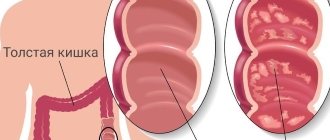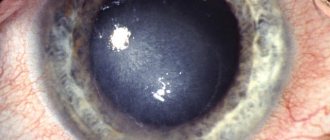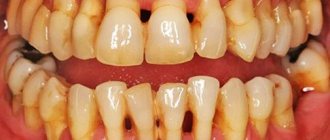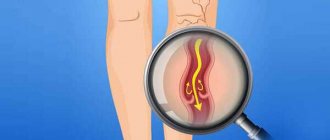Published: 10/01/2021 13:30:00 Updated: 10/01/2021
Epilepsy is a chronic neurological disease characterized by recurrent attacks with loss or confusion of consciousness associated with episodes of pathological electrical activity in a region of the gray matter of the brain.
An epileptic seizure is a temporary disturbance of consciousness, accompanied by motor, sensory, autonomic, and mental disorders.
The prevalence of epilepsy among the world's population is 10%; about 5 million new cases occur annually: 49 per 100,000 population in high-income countries and 139 per 100,000 population in countries with middle and low economic levels [3]. In total, epilepsy is diagnosed in 0.8% of adults and 1% of children [2].
Epilepsy in children is most common in the first year of life: 233 per 100,000 children under one year of age; among children from 1 to 15 years old, from 5 to 10 cases per 1000 children are registered [1].
The diagnosis of epilepsy can be made after the first attack if there is reason to assume a high risk of recurrence.
Causes of epilepsy
- Genetic predisposition.
- Injuries, including TBI.
- Hypoxia or trauma during childbirth, prematurity.
- OMNK.
- Neoplasms of the brain.
- Malaria, neurocysticercosis, meningitis, encephalitis.
- Asphyxia of various origins (obstruction by a foreign body, drowning, hanging).
- Alcoholism.
- Addiction.
Seizures are triggered by visual stimuli (flashing lights, flickering), music with an increased rhythm, intense mental activity, certain foods or movements, bodily sensations, reading, hot or cold water, sharp sounds, intoxication, fever (febrile convulsions).
However, in many cases a trigger is not required for an attack to occur. Epilepsy in adults, which begins at a relatively mature age, is associated with external causes: alcoholism, drug addiction, industrial intoxication, traumatic brain injury, neuroinfection.
Alcoholic epilepsy, strictly speaking, refers rather to epileptoform syndromes, since in true epilepsy seizures are not provoked, but occur spontaneously. Alcohol withdrawal syndrome, the initial period of alcoholic delirium or Korsakoff psychosis, and Wernicke encephalopathy lead to the development of seizures. Binge drinking increases the likelihood of alcoholic epilepsy, since anticonvulsants are not taken during this period, and withdrawal symptoms are more severe.
Symptoms and types of epilepsy
First of all, the clinical picture of epilepsy is associated with convulsive or non-convulsive seizures.
Depending on the location of the focus of pathological excitation, attacks can be focal (focus in one hemisphere) or generalized (spread of pathological excitation throughout several structures of the brain). Convulsive attacks of epilepsy can be partial (convulsive twitching of a part of the body) or generalized (general convulsive attack). The latter are accompanied by urinary and sometimes fecal incontinence.
An epileptic attack may have an aura - well-known precursor sensations to the patient on the eve of the attack. These may be special sounds, smells, tastes, visual illusions or emotional changes. Sometimes the aura is difficult for the patient to describe, but he feels it well. Vegetative manifestations and loss of consciousness are possible, not accompanied by convulsions - such an attack is called absence seizure.
Focal epilepsy (also known as Jacksonian epilepsy) is characterized during a seizure by the repetition of monotonous movements of the fingers, hand or foot, facial grimaces, phonatory convulsions, that is, a cry, involuntary sounds against the background of switching off consciousness (motor Jacksonian epilepsy), paresthesia, turning the head or eyes, flashes light in the eyes, visual, olfactory or auditory hallucinations (sensory Jacksonian epilepsy).
Motor attacks - convulsions - can be:
- clonic (convulsions of large muscle groups, “epileptic arc”);
- tonic (contractions of small muscles, monotonous movements);
- tonic-clonic (freezing in one tense position, followed by muscle twitching);
- myoclonic (weak muscle twitching, tics);
- hypermotor automatisms (externally organized, repetitive movements);
- epileptic spasm (flexion and extension of a violent nature).
The mental equivalent of an epileptic seizure resembles the “amok” known in fiction.
Suddenly the patient falls into angry psychomotor agitation, his actions are outwardly ordered, but his consciousness is deeply darkened. During an attack, the patient may leave in an unknown direction, get lost, attack someone, and even kill. The attack ends on its own after a few minutes. The patient regains consciousness, breathing normalizes, and muscles relax. Excitement gives way to inhibition, sometimes the patient falls asleep.
First aid for epilepsy comes down to gently fixing the patient's head so that he does not harm himself during an attack. No objects should be inserted into the oral cavity, since convulsive clenching of the jaws with this object can knock out teeth. After the patient comes to his senses, it is advisable to create a calm environment for rest.
The most dangerous variant of an epileptic attack is status epilepticus. This is a life-threatening condition that requires emergency medical attention. Status epilepticus is a series of convulsive attacks during which the patient lacks consciousness and normal breathing. Absence seizures - non-convulsive seizures - can also develop into status epilepticus, called epileptic stupor. The patient freezes, immersed in himself, not reacting to external stimuli.
Epilepsy is often accompanied by personality changes: pedantry, rigidity, depressive episodes and anxiety, and the inability to separate the important from the unimportant.
Epilepsy in children has age-dependent forms:
- idiopathic focal epilepsies of infancy and childhood;
- benign familial neonatal seizures;
- myoclonic epilepsy of infancy;
- childhood or juvenile absence epilepsy;
- juvenile myoclonic epilepsy.
If epilepsy in children begins at an early age, encephalopathy (epileptic or developmental encephalopathy) often develops with behavioral, thinking and neurological disorders. The first is most likely in severe attacks that begin in childhood, the second is a genetically determined mental disorder of early age, including thinking defects and autism spectrum disorders (sociopathy, stereotypies, speech disorders).
Features of the manifestation of different types of disease
There are several types of epilepsy , which manifest themselves in different ways and have different causes . So, if we are talking about the focal type, then the first manifestations may be accompanied by temporary amnesia - after convulsions the person does not remember anything, is often disoriented and does not understand where he is, and feels a headache.
There is temporal lobe epilepsy , after an attack of which metabolic processes are sometimes disrupted and endocrine disorders occur.
Post-traumatic seizures occur against the background of a brain injury. This type of epilepsy is treatable: seizures may go away forever after treatment of the underlying problem. But this does not always happen; sometimes epilepsy becomes chronic.
Consequences of epilepsy
Epilepsy is a chronic disease that remains with the patient throughout his life.
The risk of premature death associated with injuries from falls, drowning, thermal injuries, and status epilepticus (a long series of attacks with breathing problems) increases. In addition to the clinical symptoms, a person faces the social and psychological consequences of epilepsy. It is a highly stigmatizing disease that reduces the quality and length of life. In some countries, epilepsy is grounds for dismissal or divorce. The vital activity of patients is reduced for fear of being injured during an attack. Epilepsy prevents you from occupying certain positions and driving vehicles.
Human rights
People with epilepsy may face limited access to education, health and life insurance, and the right to drive or engage in certain occupations. Legislation in many countries reflects centuries of misunderstanding of epilepsy. For example:
- In China and India, epilepsy is often considered a reason to ban or annul marriages.
- In the United Kingdom of Great Britain and Northern Ireland, the law allowing the annulment of marriage on the grounds of epilepsy was repealed only in 1971.
- In the United States, until the 1970s, people with seizure disorders could be legally denied entry into restaurants, theaters, entertainment centers, and other public buildings.
Legislation based on internationally accepted human rights standards can prevent discrimination and human rights violations, improve access to health services and improve the quality of life of people with epilepsy.
Diagnosis of epilepsy
The most accurate way to diagnose epilepsy is an electroencephalogram recorded over several hours (EEG monitoring, preferably accompanied by a video recording of the attack). Epilepsy requires studying the functions of the brain, excluding other causes of convulsive syndrome: an MRI or CT scan of the brain is prescribed. Additionally, laboratory diagnostics are used.
Tests for epilepsy
In the laboratory, the presence of chromosomal abnormalities can be determined using molecular screening.
Changes in the telomeres of some chromosomes are detected, leading to limited cognitive function. For the purpose of genetic diagnosis, the following is prescribed:
- molecular screening for microdeletions/microduplications (molecular copies of a chromosome region);
- gene diagnosis of Martin-Bell or Shereshevsky-Turner syndrome.
Laboratory methods are used to diagnose TORCH infections that contribute to the development of epileptic syndrome.
To correct anticonvulsant therapy, a number of laboratory tests of the content of medications are performed:
- Levetiracetam
- Carbamazepine
- Clonazepam
- Difenin
- Phenytoin
Treatment and prevention of epilepsy
Primary prevention of epilepsy comes down to avoiding its external causes: craniocerebral herbs, infections, poisoning, including alcohol or drugs, careful management during childbirth, avoiding hypoxia and birth trauma, timely reduction of body temperature to avoid febrile convulsions.
Correctly selected therapy in most cases reduces the frequency and severity of attacks if anticonvulsants are taken systematically and carefully. A prolonged convulsive attack can be stopped with injections, for example, diazepam, relanium. Continuous treatment is prescribed by a neurologist with drugs from the group of anticonvulsants: carbamazepine, topiramate, valproate. To increase treatment adherence, long-acting forms of drugs are used. The dose is controlled by the doctor depending on the patient's condition (start of treatment, fever, kidney disease). It is impossible to select and purchase them yourself without a prescription.
In cases of development of encephalopathies, mental equivalents of convulsive seizures and epileptic personality changes, therapy is supplemented by a psychiatrist. If conservative treatment does not help, neurosurgery is sometimes resorted to.
First aid
It is important for relatives and friends of a person suffering from epilepsy to know the rules of first aid. Often the outcome of an attack depends on the actions of the people around you.
Providing first emergency aid should include the following actions:
- If there are warning signs of an attack, the person should be placed on his back and freed from tight clothing.
- Turn the person's head to the side. This is necessary to avoid tongue retraction and saliva aspiration.
- If vomiting develops, keep the patient (without excessive force) in a position on his side, preventing his head from falling back.
- Do not use surrounding objects (cutlery, spatula) to unclench your jaw during an attack.
- Do not give the person medications or liquids during an attack.
- Isolate the patient as much as possible from objects that pose a threat to him (sharp corners, piercing and cutting surfaces).
- Maintain silence and avoid sudden and loud sounds. Record the duration of the attack. If this happens for the first time, it is advisable to record it on video.
- Stays nearby until the symptoms of the attack completely stop.
- Do not touch the patient after the seizure is over. If a person falls asleep, let him sleep.
- Measure body temperature (relevant for children with high body temperatures).
If the duration of the attack exceeds 3 minutes, and the ambulance has not yet arrived, it is necessary to give the patient a drug prescribed by a doctor for the treatment of epilepsy, if the diagnosis has already been made earlier. It is important to use it rectally as oral use is unsafe.
Bibliography
- Mukhin, K.Yu. Definition and classification of epilepsy. Project classification of epileptic seizures 2016 / K.Yu. Mukhin - Text: immediate // Russian Journal of Child Neurology, 2022. - No. 12. - P. 8-19.
- Rudakova, I.G. Epilepsy. Fundamentals of diagnostics and therapy / I.G. Rudakova, S.V. Kotov, Yu.A. Belova - Text: direct // Almanac of Clinical Medicine, 2004.- P303-315.
- Epilepsy: WHO fact sheet: [Global website]. – Geneva, 2019 – URL: (access date: 09/26/2021). — Text: electronic.
Author:
Pugonina Tatyana Alekseevna, Therapist
WHO activities
WHO and its partners recognize that epilepsy is a serious public health problem. WHO, the International League Against Epilepsy (ILAE) and the International Bureau of Epilepsy (IBE) are leading a global campaign called “Out of the Shadows” to provide better information and awareness about epilepsy and intensifying efforts by the public and private sectors to improve the quality of care for patients with epilepsy and mitigate the negative consequences of this disease.
These efforts have contributed to a significant increase in awareness of epilepsy in many countries, leading to the adoption of regional declarations on the issue in all six WHO regions. In 2011, the WHO Region of the Americas endorsed the Epilepsy Strategy and Action Plan, and in 2015 the World Health Assembly adopted a resolution on the global burden of epilepsy (WHA68.20). It urged Member States to take coordinated action to combat epilepsy and its consequences.
Projects to reduce the epilepsy treatment gap and morbidity among people with epilepsy have been implemented in many countries, focusing on training and education of health workers, combating stigma, identifying possible preventive interventions and developing models for integrating epilepsy into local health systems. These projects, using a range of innovative strategies, have demonstrated that there are simple and cost-effective ways to provide epilepsy care in resource-limited settings.
The WHO Epilepsy Treatment Gaps Program and the Mental Health Gap Action Program (mhGAP) are addressing these challenges in Ghana, Mozambique, Myanmar and Viet Nam. These projects aim to improve the skills of primary and community health workers in the diagnosis, treatment and follow-up of epilepsy. Thanks to the implementation of 4 pilot projects, the program made it possible to cover 6.5 million people with the services of medical institutions that provide care for epilepsy.
1 Megiddo I, Colson A, Chisholm D, Dua T, Nandi A, and Laxminarayan R (2016). Health and economic benefits of public financing of epilepsy treatment in India: An agent-based simulation model. Epilepsia Official Journal of the International League Against Epilepsy doi: 10.1111/epi.13294.








